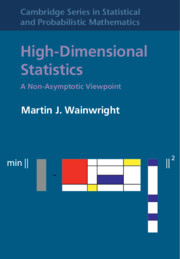Refine search
Actions for selected content:
48285 results in Computer Science
Using SWISH to Realize Interactive Web-based Tutorials for Logic-based Languages
-
- Journal:
- Theory and Practice of Logic Programming / Volume 19 / Issue 2 / March 2019
- Published online by Cambridge University Press:
- 15 February 2019, pp. 229-261
-
- Article
- Export citation
AN ABSTRACT APPROACH TO CONSEQUENCE RELATIONS
-
- Journal:
- The Review of Symbolic Logic / Volume 12 / Issue 2 / June 2019
- Published online by Cambridge University Press:
- 15 February 2019, pp. 331-371
- Print publication:
- June 2019
-
- Article
- Export citation
SUSZKO’S PROBLEM: MIXED CONSEQUENCE AND COMPOSITIONALITY
-
- Journal:
- The Review of Symbolic Logic / Volume 12 / Issue 4 / December 2019
- Published online by Cambridge University Press:
- 15 February 2019, pp. 736-767
- Print publication:
- December 2019
-
- Article
- Export citation
Introduction to the TPLP Special Issue on User-oriented Logic Programming and Reasoning Paradigms
-
- Journal:
- Theory and Practice of Logic Programming / Volume 19 / Issue 2 / March 2019
- Published online by Cambridge University Press:
- 15 February 2019, pp. 109-113
-
- Article
-
- You have access
- Export citation
MODAL LOGIC WITHOUT CONTRACTION IN A METATHEORY WITHOUT CONTRACTION
-
- Journal:
- The Review of Symbolic Logic / Volume 12 / Issue 4 / December 2019
- Published online by Cambridge University Press:
- 13 February 2019, pp. 685-701
- Print publication:
- December 2019
-
- Article
- Export citation

High-Dimensional Statistics
- A Non-Asymptotic Viewpoint
-
- Published online:
- 12 February 2019
- Print publication:
- 21 February 2019
PES volume 33 issue 1 Cover and Back matter
-
- Journal:
- Probability in the Engineering and Informational Sciences / Volume 33 / Issue 1 / January 2019
- Published online by Cambridge University Press:
- 12 February 2019, pp. b1-b2
-
- Article
-
- You have access
- Export citation
A free-rotating ball-shaped transmitting coil with wireless power transfer system for robot joints
-
- Journal:
- Wireless Power Transfer / Volume 6 / Issue 1 / March 2019
- Published online by Cambridge University Press:
- 12 February 2019, pp. 26-40
- Print publication:
- March 2019
-
- Article
- Export citation
PES volume 33 issue 1 Cover and Front matter
-
- Journal:
- Probability in the Engineering and Informational Sciences / Volume 33 / Issue 1 / January 2019
- Published online by Cambridge University Press:
- 12 February 2019, pp. f1-f2
-
- Article
-
- You have access
- Export citation
Out-domain Chinese new word detection with statistics-based character embedding
-
- Journal:
- Natural Language Engineering / Volume 25 / Issue 2 / March 2019
- Published online by Cambridge University Press:
- 11 February 2019, pp. 239-255
-
- Article
- Export citation
Inlining External Sources in Answer Set Programs
-
- Journal:
- Theory and Practice of Logic Programming / Volume 19 / Issue 3 / May 2019
- Published online by Cambridge University Press:
- 11 February 2019, pp. 360-411
-
- Article
- Export citation
COCHIS: Stable and coherent implicits
- Part of
-
- Journal:
- Journal of Functional Programming / Volume 29 / 2019
- Published online by Cambridge University Press:
- 08 February 2019, e3
-
- Article
-
- You have access
- Export citation
INEQUALITIES FOR THE DEPENDENT GAUSSIAN NOISE CHANNELS BASED ON FISHER INFORMATION AND COPULAS
-
- Journal:
- Probability in the Engineering and Informational Sciences / Volume 33 / Issue 4 / October 2019
- Published online by Cambridge University Press:
- 07 February 2019, pp. 618-657
-
- Article
- Export citation
Getting Started
-
- Book:
- Doing Better Statistics in Human-Computer Interaction
- Published online:
- 26 January 2019
- Print publication:
- 07 February 2019, pp 1-8
-
- Chapter
- Export citation
11 - A Robust t-Test
- from Part II - How to Use Statistics
-
- Book:
- Doing Better Statistics in Human-Computer Interaction
- Published online:
- 26 January 2019
- Print publication:
- 07 February 2019, pp 125-138
-
- Chapter
- Export citation
Contents
-
- Book:
- Doing Better Statistics in Human-Computer Interaction
- Published online:
- 26 January 2019
- Print publication:
- 07 February 2019, pp vii-x
-
- Chapter
- Export citation
Part II - How to Use Statistics
-
- Book:
- Doing Better Statistics in Human-Computer Interaction
- Published online:
- 26 January 2019
- Print publication:
- 07 February 2019, pp 69-70
-
- Chapter
- Export citation
Dedication
-
- Book:
- Doing Better Statistics in Human-Computer Interaction
- Published online:
- 26 January 2019
- Print publication:
- 07 February 2019, pp v-vi
-
- Chapter
- Export citation


